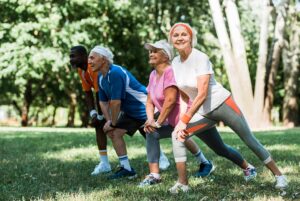
Interestingly, those who included more moderate and high-intensity activities in their routines experienced less bone density decline than those with lower activity levels or intensity. Postdoctoral Researcher Tiina Savikangas emphasizes the significance of even short bursts of activity for bone health, noting that impacts comparable to brisk walking contribute to better preservation of bone mineral density.
As we age, both the amount and intensity of physical activity tend to decrease, leading to a decline in bone health. However, this study highlights the importance of structured exercises and everyday activities in maintaining bone health. The findings suggest that incorporating bone-loading impact activities into daily routines, like brisk walks or stair climbing, can be beneficial.
Postdoctoral Researcher Tuuli Suominen suggests practical ways to include high-intensity activity in daily life, such as performing jumping-like impacts without actual jumping—by lifting up on tiptoes and then dropping down onto the heels. This simple addition to routine activities can contribute to better bone health, especially in the femoral neck, which is susceptible to fall-related fractures.
Preventing hip fractures involves preserving bone mineral density at the femoral neck and reducing the risk of falls. The study suggests that increasing daily physical activity, particularly in older individuals who are not regular exercisers, may enhance bone health and prevent fractures by improving functional capacity and muscle strength. Strong muscles lower the risk of falls and allow bones to be loaded more efficiently.
The research is part of the PASSWORD study conducted by the Faculty of Sport and Health Sciences and Gerontology Research Centre at the University of Jyväskylä between 2017 and 2020. Involving 299 participants aged 70 to 85 from Jyväskylä, the study focused on individuals who were less active than recommended before the intervention.
All participants engaged in progressive muscle strength, endurance, balance, and flexibility training, with half also participating in a computer training program focused on information processing skills. Accelerometers measured the amount and intensity of physical activity before and after six months of training, while dual-energy X-ray absorptiometry assessed femoral neck bone density and structural properties before and after the one-year exercise program.
The research findings are published in the journal Bone.